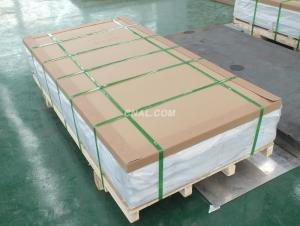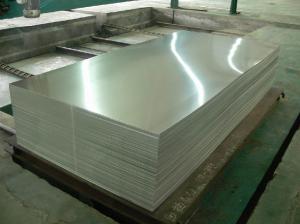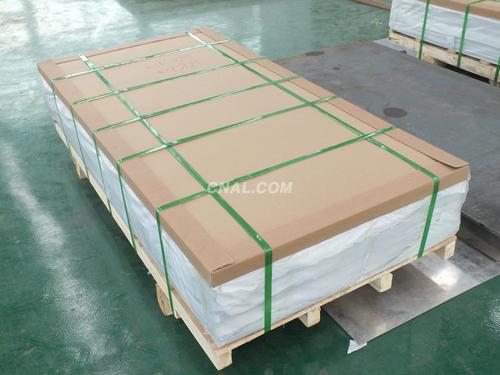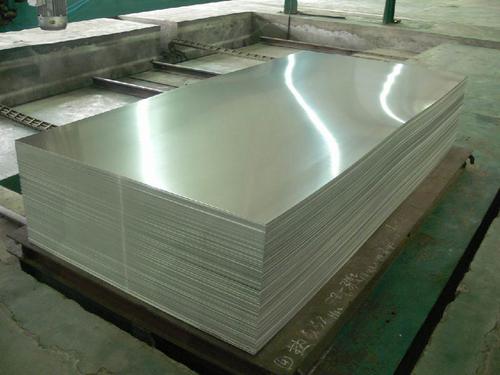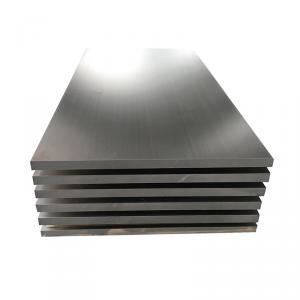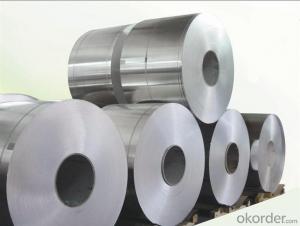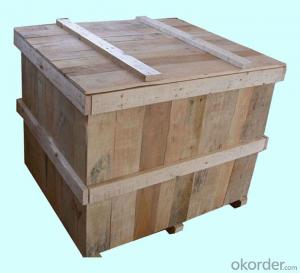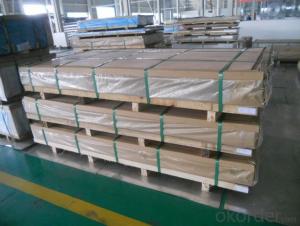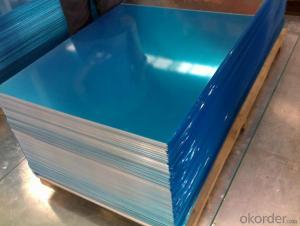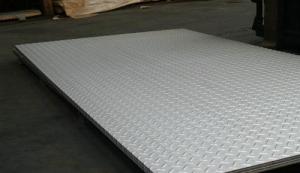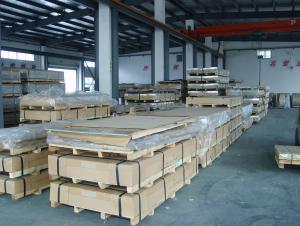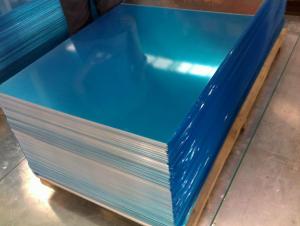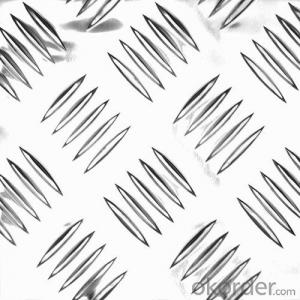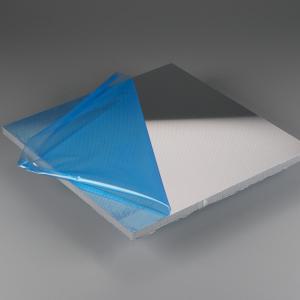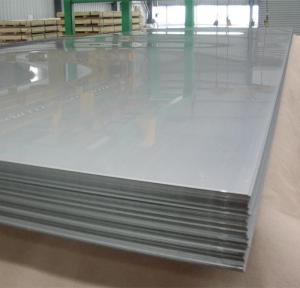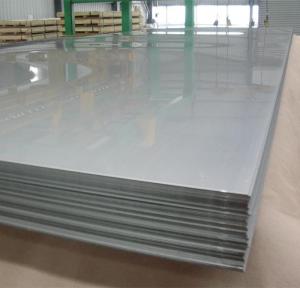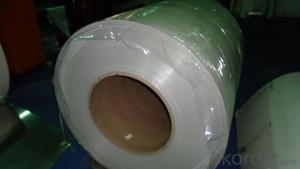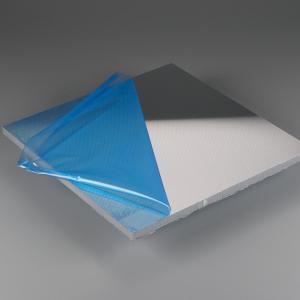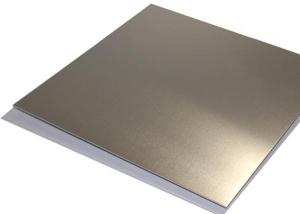Aluminum Sheets 1XXX C.C Quality
- Loading Port:
- China Main Port
- Payment Terms:
- TT or LC
- Min Order Qty:
- 4 m.t.
- Supply Capability:
- 10000 Tons m.t./month
OKorder Service Pledge
OKorder Financial Service
You Might Also Like
1.Structure of Aluminum Sheets 1xxx C.C Quality Description:
Aluminum sheets 1xxx C.C quality is cut from aluminum coils 1xxx. The aluminum content of aluminum sheets 1xxx C.C quality is 99% at least. It has great ductility, heat conductivity, anti-corrosion and moisture resistance properties.
Aluminum sheets 1xxx C.C quality is widely used for electronics, instruments, lighting decoration, packing industry, house decoration, curtain wall, honeycomb-core panel, sandwich panel, aluminum composite panel and aluminum composite pipes.
2.Main Features of the Aluminum Sheets 1xxx C.C Quality:
• Superior quality of raw material
• Reasonable and stable chemical composition
• Accurate tolerance
• Goode mechanical property
3.Aluminum Sheets 1xxx C.C Quality Images
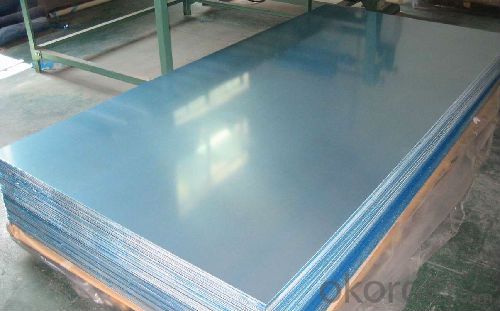
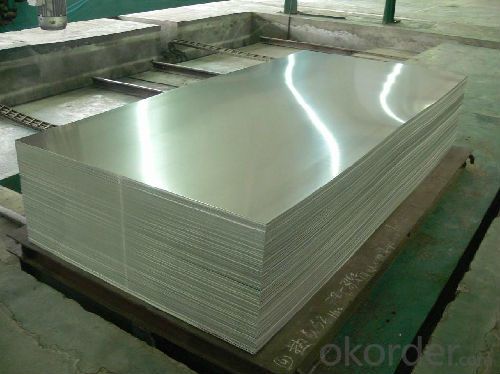
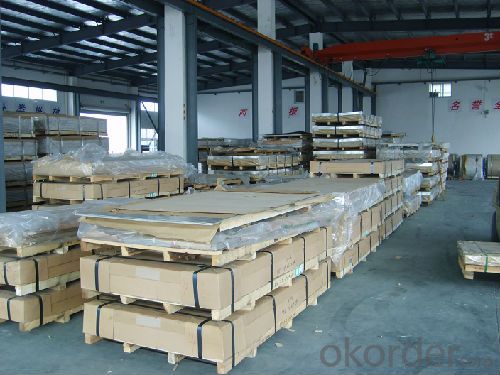
4.Aluminum Sheets 1xxx C.C Quality Specification
Alloy | AA1xxx (AA1050, AA1060, AA1070, AA1100 etc. |
Temper | H14, H16, H18, H22, H24, H26, H32, O/F |
Thickness | 0.2mm -- 100mm |
Width | 30mm -- 1700mm |
Standard | GB/T 3880-2006,EN,ASTM,JIS |
5. FAQ of Aluminum Sheets 1xxx C.C Quality
A.How to guarantee the quality?
Customers are welcome to our mill to visit and check the products. Besides, we can arrange a third party to test the aluminum sheets 1xxx C.C quality products.
B.When will you deliver the products?
The aluminum aluminum sheets 1xxx C.C quality will be delivered within 35 days after receiving advanced payment or original L/C.
- Q: Are aluminum sheets suitable for HVAC ductwork?
- Indeed, HVAC ductwork can be made using aluminum sheets. The lightweight and durable characteristics of aluminum make it a favored option for ductwork. Its resistance to corrosion is crucial in HVAC systems where moisture and condensation are prevalent. Moreover, aluminum ductwork exhibits excellent thermal conductivity, enabling efficient heat transfer. Furthermore, the simplicity of working with aluminum sheets renders installation and maintenance relatively easy. Ultimately, aluminum sheets guarantee dependable performance and energy efficiency, making them a trustworthy selection for HVAC ductwork.
- Q: Can the aluminum sheets be used for manufacturing light reflectors?
- Certainly! Aluminum sheets possess the potential to be utilized in the fabrication of light reflectors. Due to its remarkable reflectivity, aluminum is a frequently employed metallic substance across diverse industrial fields, encompassing the creation of light reflectors. Its exceptional reflectivity facilitates the efficient redirection and intensification of light, rendering it an impeccable material for manufacturing light reflectors for a range of purposes, such as illuminating fixtures, automotive front lights, solar panels, and photographic apparatus. Moreover, the lightweight nature, durability, and resistance to corrosion exhibited by aluminum sheets further augment their aptness for fulfilling this objective.
- Q: When Aluminium nitrate is heated , i got yellow amorphous solid which did not not melt on further heating. What compound is that?
- Aluminium nitrate follows the rules for metal nitrate decomposition. Group I nitrate Na K etc --- nitrite + oxygen Other metal nitrate --- Metal Oxide + nitrogen dioxide + oxygen So your final product is aluminium oxide.
- Q: Are aluminum sheets suitable for marine applications?
- Indeed, aluminum sheets prove to be a fitting option for marine applications. Owing to its exceptional resistance to corrosion and durability in marine settings, aluminum emerges as a widely employed material in the maritime sector. Notably, its lightweight yet robust nature renders it an ideal selection for diverse purposes, encompassing boat construction, ship hulls, decks, and other marine structures. Moreover, aluminum boasts a commendable strength-to-weight ratio, thereby enhancing fuel efficiency and reducing operational expenses. Its capacity to endure the harsh conditions of saltwater, coupled with its minimal maintenance requirements, further solidifies its popularity in marine applications. All in all, aluminum sheets serve as a dependable and efficient material for employment in the marine industry.
- Q: Aluminium magnesium alloy plate, 5052 aluminium plate, 5005 aluminium plate. 5252 aluminum plate performance and use
- Aluminum magnesium alloy aluminum sheet, also known as 5 * * * series aluminum alloy plate, which represents 5052 aluminum plate, 5005 aluminum plate, 5083 aluminum plate, 5754 aluminum plate, 5A02l aluminum plate, 5A05 aluminum plate and so on. The alloy elements of aluminium magnesium alloy aluminum plate are mainly magnesium, and the magnesium content is between 3-5%. The main characteristics are low density, high tensile strength and high elongation. In the same area, the weight of Al Mg alloy is lower than other series. It is often used in aviation, such as aircraft fuel tanks. It is also widely used in conventional industries. The processing technology is continuous casting and continuous rolling, belonging to the hot rolled aluminum plate series, so it can be oxidized deep processing. In our country, the 5 * * * series aluminum plate is one of the more mature aluminum plate series.
- Q: For example, now the price of aluminum is 30000 yuan / ton. How much is that 2mm aluminum sheet with 1 square meters? What's the formula?What about the stainless steel plate, iron plate, and galvanized sheet? Can these (yuan / ton) be converted into (yuan / square)?Hurry! Which expert can I help you?!
- Know that the density of aluminum is 2.7 g / cubic centimeter or 2700 kg / cubic meterThen 2mm thick aluminium plate with a weight of 1 square meters is:M= P *v=2700*1*0.002=5.4 (kg)=5.4*10^ (-3) tonsThe price of aluminium is 30000 yuan / ton nowTherefore, the title of the money required should be 30000* (5.4*10^ (-3)) =162 yuanEmpathy,The density of iron is 7.8 KG/M3The density of stainless steel is 7.52-7.75 KG/M3The same is true of galvanized sheets, as long as the density is known
- Q: What is the thermal conductivity of 101 aluminum sheets?
- The thermal conductivity of 101 aluminum sheets depends on various factors such as the thickness of the sheets, the purity of the aluminum, and the temperature at which the measurement is taken. Generally, aluminum has a high thermal conductivity, ranging from 205 to 250 watts per meter kelvin (W/mK). However, it is advisable to refer to specific technical data or consult with a manufacturer for accurate information on the thermal conductivity of 101 aluminum sheets.
- Q: What are the potential safety issues that may arise from the use of aluminum sheets?
- <p>Aluminum sheets are generally safe to use in most applications. However, there are a few safety concerns to consider. First, aluminum can be a skin irritant for some individuals, so it's important to wear protective gloves when handling. Second, aluminum dust, when inhaled, can cause respiratory issues. Proper ventilation should be maintained during cutting or grinding operations. Lastly, aluminum can conduct electricity, so it should not be used in electrical applications without proper insulation. Always follow safety guidelines and use protective equipment when working with aluminum sheets to minimize these risks.</p>
- Q: which is the best bonding method for aluminum sheet and plastic?
- smear glue, there is a glue special for the bonding of plastic and steel materials.
- Q: Can aluminum sheets be used for boat building?
- Yes, aluminum sheets can be used for boat building. Aluminum is a popular material choice due to its strength, durability, and resistance to corrosion. It is lightweight and easy to work with, making it suitable for constructing various types of boats. Additionally, aluminum boats are known for their longevity and low maintenance requirements.
Send your message to us
Aluminum Sheets 1XXX C.C Quality
- Loading Port:
- China Main Port
- Payment Terms:
- TT or LC
- Min Order Qty:
- 4 m.t.
- Supply Capability:
- 10000 Tons m.t./month
OKorder Service Pledge
OKorder Financial Service
Similar products
Hot products
Hot Searches
Related keywords
